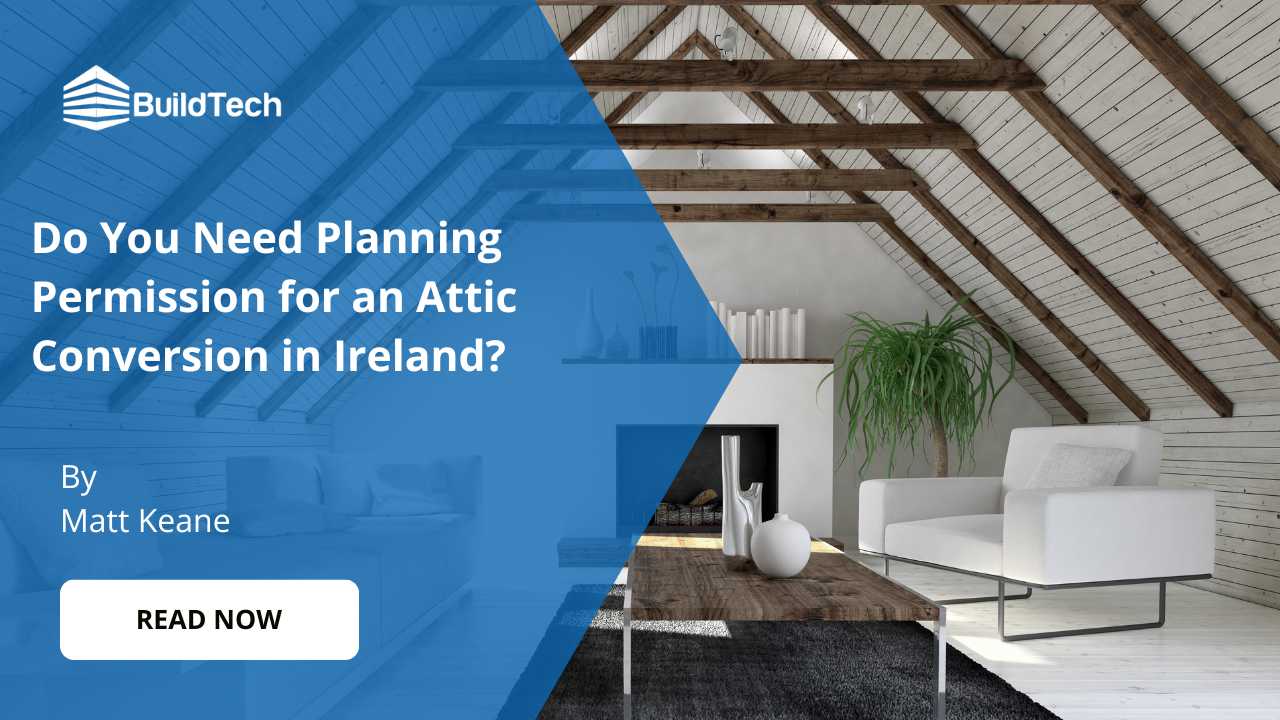Home extensions can greatly enhance the value of your property and quality of life. One of the most popular and cost-effective home improvement projects in Ireland is a single-storey extension. But what is the cost of a single-storey extension? What's involved in planning, design and implementation? This comprehensive guide from BuildTech will provide you with all the answers, tips, and advice you need when considering single-storey extensions. By the time you finish reading, you'll have an in-depth understanding of single-storey extensions: cost, design, and planning advice.
What is the Cost of a Single Storey Extension?
Building Costs
Building a single-storey extension in Ireland typically costs between €1,200 to €1,500 per square metre. However, this figure may fluctuate depending on the complexity of the design, materials used, and your specific geographical location within Ireland. For instance, areas with high labour costs, such as Dublin, may push your budget further.
Additional Costs
Additional expenses include architects, structural engineers, surveys, and project management fees. Not forgetting planning permission fees, party wall agreements, and VAT generally stand at 13.5% for renovations and extensions in Ireland. All these costs may vary depending on the complexity of your project.
Planning a Single Storey Extension
Understand Your Needs
Before starting your project, ensure you understand why you need the extension. Do you need more space? Are you looking for an open-plan living area, a new kitchen, an extra bedroom, or a home office? Defining your needs will guide the design process and help you estimate costs more accurately.
Seek Expert Advice
Engage professionals early. Architects, structural engineers, and builders can provide valuable advice that could save you money and ensure your project meets all regulations.
Consider Neighbours and the Environment
When planning, consider your neighbours and the surrounding environment. Any development should not negatively impact your neighbours' rights to light, privacy, or property access. Also, consider how the extension will fit into the existing streetscape.
Designing a Single Storey Extension
Designing a single-storey extension should be a collaborative effort involving you, your architect, and your builder. Your needs and budget should guide the design process. However, consider these elements:
Space Utilisation
Design your extension to maximise the use of space. Think about how you'll use the new space and how it interacts with the existing building.
Light
Light has a significant impact on how we perceive space. Use natural light through large windows, roof lights, and open-plan designs.
Material Selection
Material selection will affect both the cost and the aesthetics of your extension. Choose materials that match or complement your existing building but also consider their durability and maintenance requirements.
How to Add a Single-Storey Extension
Here are the general steps involved in adding a single-storey extension:
- Define your needs and budget
- Consult with professionals
- Design the extension
- Seek planning permission if needed
- Hire a reputable builder
- Construct the extension
- Inspect and finish the build
Each of these steps has its challenges, and we recommend working with a professional design and build company like BuildTech to ensure your project runs smoothly.
Single Storey Extension Ideas
Your single-storey extension can take on various forms, such as:
Rear Extension
Rear extensions are popular as they offer an opportunity to open up the back of your home to create a seamless connection with the garden.
Side Extension
If your property has unused space on the side, a side extension can provide an opportunity to expand your home without compromising your garden space.
Wrap-Around Extension
A wrap-around extension combines both rear and side extensions to provide a large space that can transform your living area.
Rules and Regulations for Single-Storey Extensions
Certain types of single-storey extensions in Ireland can be built without planning permission under the General Development Plan (GDP). However, the extension must meet specific requirements, including:
- The extension should not reduce the open space at the back of the house to less than 25 square metres.
- The height should not exceed the house's existing height or 4 metres if the extension is within 2 metres of the boundary.
- The extension should not be used as a separate dwelling.
Extensions that do not meet these requirements will require planning permission. Always consult with your local planning department or a professional to ensure you comply with all regulations.
Top Tips for Nailing the Design of Your Single-Storey Extension
Maintain a Consistent Style
Ensure your extension design is in harmony with the existing property. This doesn't necessarily mean the style has to match exactly, but it should complement and enhance the existing architecture.
Incorporate High-Quality Doors and Windows
Invest in high-quality doors and windows to improve the look of your extension and enhance its energy efficiency.
Consider the Roof Design
The roof design can affect your extension's aesthetics and functionality. Flat roofs can offer a contemporary look, but pitched roofs can provide additional storage or loft space.
How to Build an Extension on a Budget?
Building an extension can be a significant financial investment, but there are ways to save:
Simplify the Design
Complex designs will cost more to build. Keep your design simple and efficient to save on building costs.
Choose Cost-Effective Materials
You can save a significant amount by choosing cost-effective materials. However, don't sacrifice durability and quality to save money.
Manage the Project Yourself
Hiring a project manager can add to the cost of your extension. You could manage the project yourself if you have the time and skills.
Architects’ Fees for Single-Storey Extensions
Architects’ fees can vary widely based on the complexity of the project and the level of service you require. As a guide, expect to pay between 7% - 12% of the total project cost. This fee includes design work, helping with planning permission and building regulations, and overseeing the build.
Structural Engineer Fees for Single-Storey Extensions
Structural engineers provide the calculations and drawings needed to build your extension safely. Their fees depend on the project's complexity, but you should budget around €500 to €1,000 for their services.
Survey Fees for Single-Storey Extensions
Before starting your extension, you might need to survey your property. This will ensure your design works with your property's existing layout and any potential constraints. The survey cost will depend on your property's complexity and size, but you should budget between €300 and €600.
Project Manager Fees for Single-Storey Extensions
If you choose to hire a project manager, expect to pay around 10% - 15% of the project cost. A project manager can provide valuable skills and experience, ensure your project is completed on time and within budget, and take the stress out of the building process.
How to Reduce the Cost of Your Extension
Here are some additional ways to reduce the cost of your extension:
- Be flexible with your finish dates. This allows you to take advantage of cheaper, off-peak rates.
- Opt for off-the-shelf items over custom-made ones.
- Do some work yourself, but be realistic about your skills and time commitment.
- Seek multiple quotes to ensure you are getting the best price.
Single Storey Extension: A Cost-Effective Alternative to Moving House
A single-storey extension is a cost-effective alternative to moving house. Besides the financial benefits, an extension allows you to stay in your beloved home and neighbourhood while creating the extra space you need. It also allows you to design and personalise the new space to suit your needs and tastes.
Contact BuildTech for Your Single Storey Extension Project
BuildTech is a leading design and build company in Ireland. We have a wealth of experience in delivering high-quality, cost-effective single-storey extensions that meet and exceed our client's expectations. Our team of professionals will guide you through the entire process, from initial concept and design to construction and completion. Contact us today to discuss your single-storey extension project. Let us bring your vision to life!


















